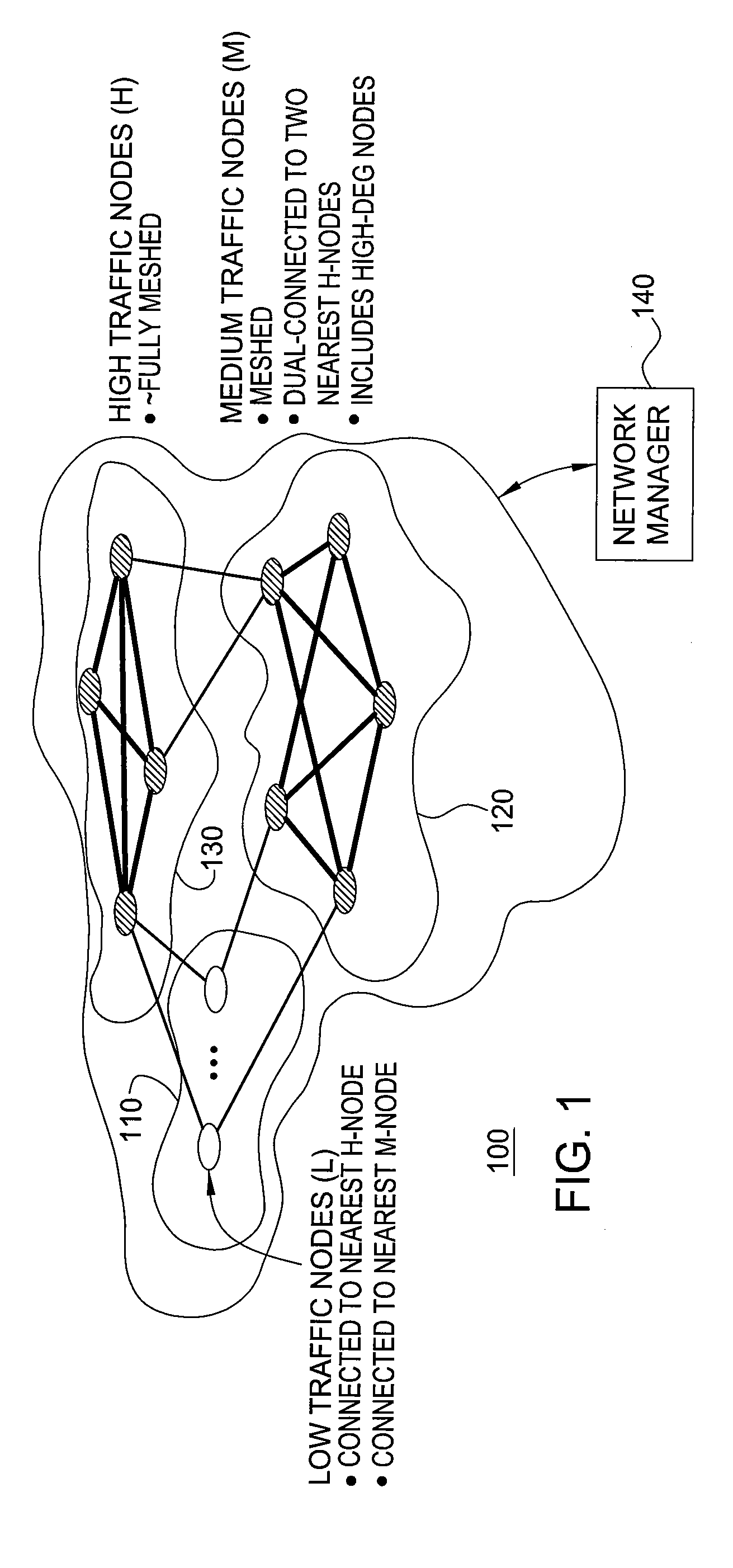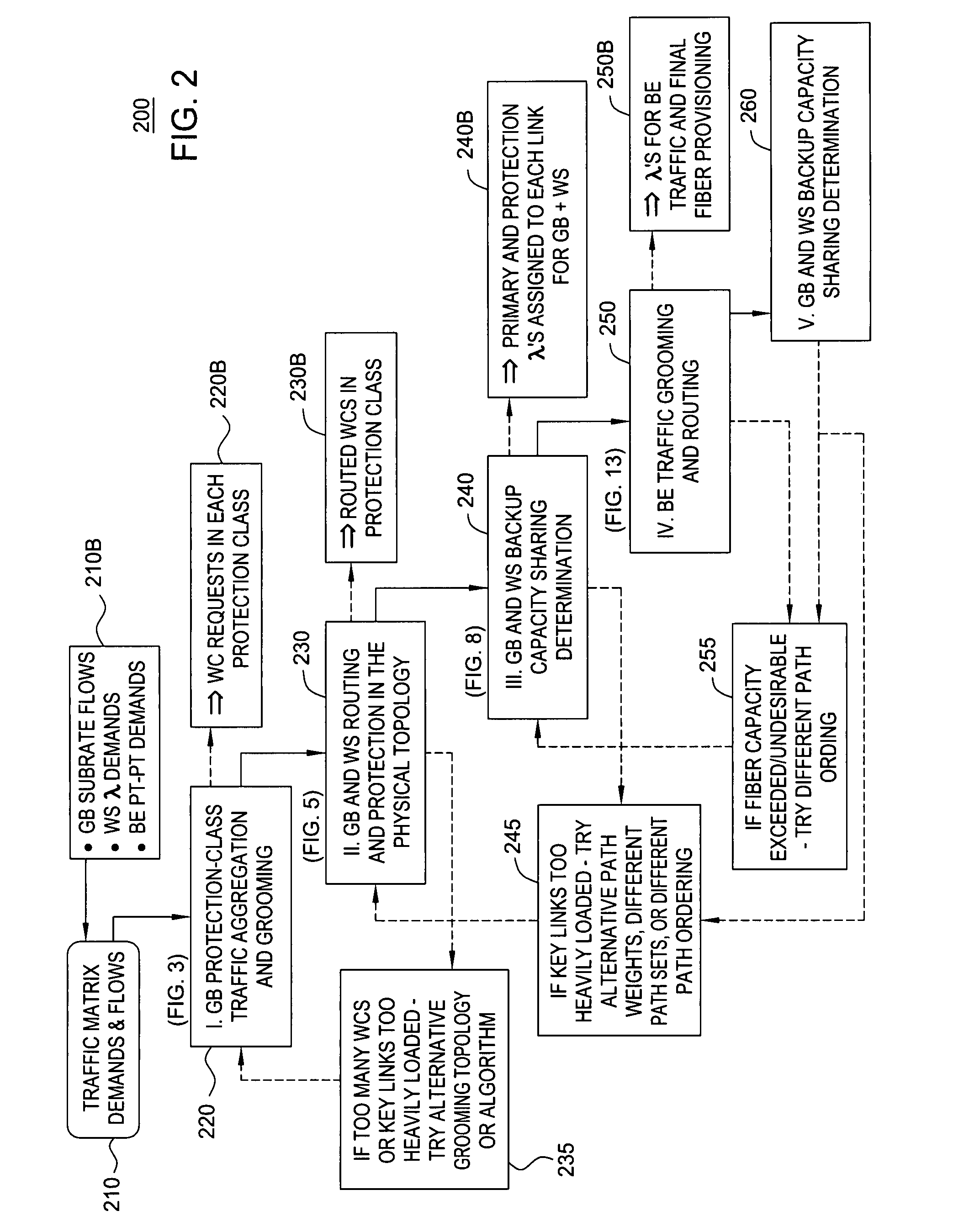Method and System for Efficient Provisioning of Multiple Services for Multiple Failure Restoration in Multi-Layer Mesh Networks
a multi-layer mesh network and multi-service technology, applied in the field of communication networks, can solve the problems of mathematical intractable or computationally impractical to solve, the process of planning and provisioning bandwidth and capacity in modern large-scale mesh networks is complicated, and the mpls network is an np-hard combinatorial optimization problem, etc., to achieve efficient planning and provisioning, fast restoration, and multi-service restoration
- Summary
- Abstract
- Description
- Claims
- Application Information
AI Technical Summary
Benefits of technology
Problems solved by technology
Method used
Image
Examples
Embodiment Construction
[0025]The subject invention in one embodiment is a method and system process for efficiently planning and provisioning fast, multi-service restoration from multiple failures in large-scale packet-over-optical mesh networks across multiple network layers. The types of services include (1) wavelength services (WS) that consist of one or more co-propagating wavelengths required between a source and destination pair, and two types of packet services which are (2) guaranteed bandwidth (GB) services that consist of sub-wavelength traffic between source and destination pairs that will be provided a specified amount of bandwidth for transmission, and (3) best-effort packet traffic that consists of variable traffic demands between source and destination nodes but has no guarantee of bandwidth between the terminating nodes. The WS and GB traffic types are protected against one or more complete failures of nodes or links in the network up to k failures network-wide. The BE traffic is unprotect...
PUM
 Login to View More
Login to View More Abstract
Description
Claims
Application Information
 Login to View More
Login to View More - R&D
- Intellectual Property
- Life Sciences
- Materials
- Tech Scout
- Unparalleled Data Quality
- Higher Quality Content
- 60% Fewer Hallucinations
Browse by: Latest US Patents, China's latest patents, Technical Efficacy Thesaurus, Application Domain, Technology Topic, Popular Technical Reports.
© 2025 PatSnap. All rights reserved.Legal|Privacy policy|Modern Slavery Act Transparency Statement|Sitemap|About US| Contact US: help@patsnap.com



